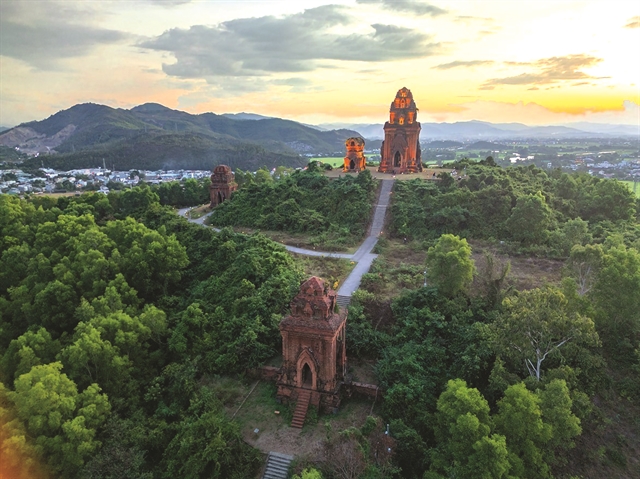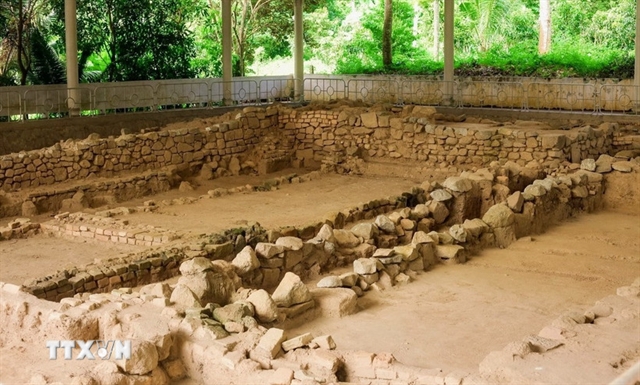 |
| ANCIENT QUAD: The Bánh Ít Tower complex, located on a hilltop in Tuy Phước Bắc Commune, consists of four different towers: the Main Tower (Kalan), the Gate Tower (Gopura), the Fire Tower (Kosagrha), and the Stele Tower (Posah). VNA/VNS Photos Khánh Hoà |
The Tower of Bánh Ít in former Bình Định Province (now part of enlarged Gia Lai Province), is one of the oldest and largest surviving clusters of towers in the now defunct Kingdom of Cham Pa in central Việt Nam. Its architecture bears the distinctive features of the Chăm art, with intricate decorative motifs.
The complex was built in the late 11th and early 12th centuries and consists of four towers, each with its own unique architectural style and function.
Over the centuries, Bánh Ít Tower has stood not only as an architectural work reflecting the construction techniques and sculptural art of the ancient Chăm people, but also as a cultural and historical site preserving valuable traditions.
 |
| SYMBOLIC: Bánh Ít Tower was once the site of traditional Chăm rituals for centuries. Although such ceremonies are no longer regularly held, the vestige remains deeply meaningful to the community as a symbol of cultural heritage and spiritual values passed down by their ancestors. |
It reflects the cultural and spiritual life of the community, embodying the convergence of history, religion, and art, and contributing to the cultural identity of central Việt Nam.
The complex was recognised as a national architectural and artistic relic in 1982. In 2014, it was listed among the top 10 most visited ancient towers by the Vietnam Records Organisation.
Four years ago the then Bình Định authorities approved a project for the restoration, preservation, and promotion of the Bánh Ít Tower relic site. The project was completed at the cost of over VNĐ25 billion (US$980,000).
The project included adding interior furnishings, displaying worship items at the Bánh Ít Tower Temple, and installing patterned mouldings at the main hall entrance of the exhibition house. VNS
 |
| INTRICATE: The architecture of Bánh Ít Tower is a testament to durable construction techniques and the artistic mastery of the ancient Chăm people. |
 |
| OUTSTANDING: This era marked the peak of Chăm architecture, reflected in the motifs, structures, and construction techniques. |
 |
| TOWERING: The Main Tower sits at the highest point on the hill, standing almost 30m tall with a square base measuring 12m on each side. It features the main entrance facing east and three false doors. |
 |
| IMPOSING: The Fire Tower (Kosagrha) has a rectangular structure with walls 1.4 metres thick. It is also known as the Saddle Tower. |
 |
| ANCIENT TECHNIQUE: Bánh Ít Tower was built in the late 11th to early 12th centuries, during the f lourishing period of the Chăm Pa Kingdom. |
 |
| STANDING TALL: The Stele Tower (Posah). |
.jpg) Life & Style
Life & Style
.jpg)








.jpg)



